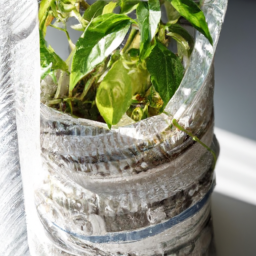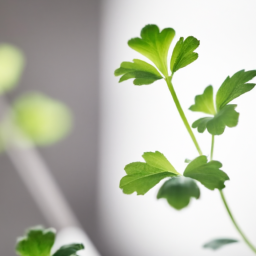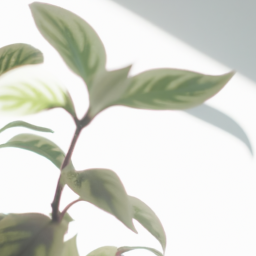
Plant lights are a vital tool for indoor gardening enthusiasts, providing the necessary light spectrum for plants to thrive in the absence of natural sunlight. Whether you’re a seasoned green thumb or a beginner looking to cultivate a green oasis indoors, understanding the importance of plant lights is crucial for successful indoor gardening. In this blog post, we will delve into the world of plant lights, exploring their benefits, different types, and how to choose the right ones for your specific plants. So, let’s shed some light on the topic of plant lights and discover how they can help your indoor garden flourish.
Different Types of Plant Lights: A Comprehensive Guide
Introduction
When it comes to growing plants indoors, providing adequate lighting is crucial for their growth and development. Natural sunlight may not always be accessible, especially in areas with limited sunlight or during the winter months. This is where plant lights come into play. Plant lights, also known as grow lights, are artificial light sources designed to mimic the spectrum of sunlight and provide the necessary light energy for plants to carry out photosynthesis effectively. In this comprehensive guide, we will explore the different types of plant lights available in the market, their pros and cons, and how to choose the right one for your indoor garden.
1. Fluorescent Lights
Fluorescent lights are one of the most common types of plant lights used by indoor gardeners. They come in two main forms: compact fluorescent lights (CFLs) and high-intensity discharge (HID) fluorescent lights. CFLs are affordable, energy-efficient, and emit a broad spectrum of light suitable for most plants. On the other hand, HID fluorescent lights are more powerful and emit intense light, making them ideal for larger indoor gardens or plants with high light requirements. Both types of fluorescent lights are relatively easy to install and have a long lifespan.
However, fluorescent lights have some limitations. They are not as efficient as other types of plant lights, and their light intensity decreases over time. Additionally, fluorescent lights emit a significant amount of heat, which can be detrimental to sensitive plants if not properly managed. Despite these drawbacks, fluorescent lights are a popular choice for beginners and budget-conscious indoor gardeners.
2. LED Lights
LED lights, or light-emitting diodes, have gained immense popularity in recent years due to their energy efficiency and versatility. LED plant lights are available in a wide range of colors, allowing gardeners to customize the light spectrum according to their plants’ specific needs. These lights are highly efficient, producing little heat and consuming minimal electricity.
LED lights also have a longer lifespan compared to fluorescent lights, making them a cost-effective choice in the long run. Additionally, LED lights can be easily adjusted to provide different light intensities and colors, allowing for precise control over plant growth. However, LED lights can be more expensive upfront compared to other options, and the initial investment may deter some gardeners.
3. High-Pressure Sodium (HPS) Lights
High-pressure sodium lights are a type of HID lighting commonly used in commercial greenhouse settings. These lights emit a strong yellow-orange light spectrum, which is ideal for promoting flowering and fruiting in plants. HPS lights are known for their high light intensity and are often used in combination with other types of plant lights to provide a balanced spectrum.
However, HPS lights have a few drawbacks. They consume more electricity and produce more heat compared to other types of plant lights. The intense light output may also require additional cooling systems to maintain optimal temperatures for plant growth. Due to these factors, HPS lights are more commonly used in large-scale operations rather than small indoor gardens.
Choosing the Right Plant Light
Now that we have explored the different types of plant lights available, it’s essential to consider a few factors when choosing the right one for your indoor garden:
1. Plant’s Light Requirements: Different plants have varying light requirements. Some plants thrive in low light conditions, while others need intense light. Understanding your plant’s light needs will help you determine the appropriate light intensity and spectrum.
2. Energy Efficiency: Consider the energy efficiency of the plant light. LED lights are known for their energy-saving capabilities and long lifespan, making them an environmentally friendly choice.
3. Budget: Determine your budget and consider the initial cost as well as the long-term expenses associated with the plant light. While LED lights may be more expensive upfront, they can save money in the long run due to their energy efficiency and durability.
4. Space and Coverage: Evaluate the size of your indoor garden and the coverage area of the plant light. Ensure that the light can adequately cover all your plants and provide uniform lighting.
5. Plant Growth Stage: Different plant lights may be more suitable for specific growth stages. Some lights are better for vegetative growth, while others are designed to promote flowering and fruiting.
Conclusion
Choosing the right plant light is crucial for the success of your indoor garden. Whether you opt for fluorescent lights, LED lights, or HPS lights, each type has its advantages and limitations. Consider your plants’ specific needs, energy efficiency, budget, space, and growth stage to make an informed decision. Remember to monitor your plants closely and adjust the lighting as needed to ensure optimal growth and development. With the right plant light, you can create a thriving indoor garden and enjoy the beauty of nature all year round.
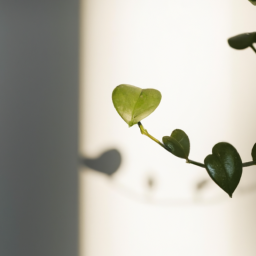
How to Choose the Right Plant Lights for Indoor Gardening
Indoor gardening has become increasingly popular, allowing plant enthusiasts to grow a wide variety of plants even in limited spaces. However, one crucial factor for successful indoor gardening is choosing the right plant lights. Plant lights, also known as grow lights, are artificial light sources that provide the necessary light spectrum for plants to photosynthesize and grow. In this guide, we will walk you through the process of selecting the perfect plant lights for your indoor garden.
Understanding Different Types of Plant Lights
Before diving into the selection process, it’s essential to understand the different types of plant lights available in the market. Each type has its own unique characteristics and benefits, so let’s explore them:
1. Fluorescent Lights: Fluorescent lights are a popular choice for indoor gardeners, especially beginners, due to their affordability and versatility. There are two main types of fluorescent lights: compact fluorescent lights (CFLs) and high-output fluorescent lights (HOFLs). CFLs are suitable for small-scale indoor gardens, while HOFLs provide higher light intensity for larger spaces.
2. LED Lights: LED lights have gained immense popularity in recent years due to their energy efficiency and long lifespan. They are available in various spectrums, allowing you to choose the right combination for different growth stages of your plants. LED lights are also compact and emit less heat, making them ideal for small indoor spaces.
3. High-Intensity Discharge (HID) Lights: HID lights are known for their high light intensity, making them suitable for large-scale indoor gardening projects. There are two types of HID lights commonly used: metal halide (MH) lights and high-pressure sodium (HPS) lights. MH lights emit a bluish-white light spectrum, ideal for vegetative growth, while HPS lights emit a reddish-orange spectrum, promoting flowering and fruiting.
Factors to Consider When Choosing Plant Lights
Now that you are familiar with the different types of plant lights, let’s explore the key factors you should consider before making a purchase:
1. Light Spectrum: Different plants have varying light requirements during different growth stages. Look for plant lights that offer a full spectrum, including blue, red, and white lights. Blue lights promote vegetative growth, while red lights enhance flowering and fruiting. White lights provide a balanced spectrum for overall plant health.
2. Light Intensity: The light intensity required depends on the type of plants you are growing and the stage of growth. Leafy greens, herbs, and seedlings require lower light intensity, while flowering plants and fruiting vegetables need higher intensity. Check the light intensity measurement (in lumens or lux) provided by the manufacturer to ensure it matches your plant’s needs.
3. Energy Efficiency: Opt for energy-efficient plant lights, such as LED lights, to minimize electricity consumption and reduce heat generation. LED lights convert most of the energy into usable light, making them more efficient than traditional options like HID lights.
4. Coverage Area: Consider the size of your indoor garden and choose plant lights that can adequately cover the entire area. Manufacturers usually provide information about the recommended coverage area, helping you determine the number of lights required for optimal plant growth.
5. Durability and Lifespan: Look for plant lights that are durable and have a long lifespan. LED lights typically last longer compared to fluorescent or HID lights. Investing in high-quality lights ensures they will withstand the rigors of indoor gardening and provide consistent performance over time.
Tips for Installing and Using Plant Lights
Once you have selected the right plant lights, here are some tips for their installation and usage:
1. Mounting: Install the lights at an appropriate height above the plants to ensure optimal light distribution. Follow the manufacturer’s guidelines for the recommended distance between the lights and the plant canopy.
2. Light Schedule: Different plants have different light requirements. Generally, most plants require 12-16 hours of light per day for optimal growth. Use a timer to automate the light schedule and maintain consistency.
3. Light Positioning: Rotate your plants regularly to ensure even light exposure on all sides. This prevents plants from leaning or stretching towards the light source, promoting balanced growth.
4. Monitor Plant Response: Observe your plants closely and monitor their response to the light source. If you notice signs of light burn (brown or yellow spots on leaves) or light deficiency (pale or elongated stems), adjust the light intensity or distance accordingly.
5. Maintenance: Regularly clean the plant lights to remove dust and debris, as they can reduce light penetration. Replace any faulty bulbs promptly to maintain optimal light output.
Choosing the right plant lights for your indoor garden is crucial for the success of your plants. By considering factors like light spectrum, intensity, energy efficiency, coverage area, durability, and lifespan, you can ensure healthy and thriving plants year-round. Follow the installation and usage tips to maximize the benefits of your chosen plant lights. Happy gardening!
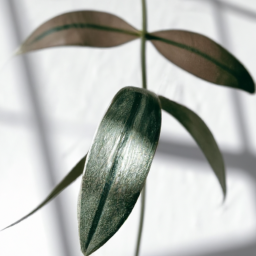
The Benefits of Using LED Plant Lights for Growing Plants
LED plant lights have gained significant popularity among indoor gardeners and enthusiasts due to their numerous benefits. Whether you are a seasoned gardener or just starting out, understanding the advantages of using LED plant lights can greatly enhance your plant growth and overall gardening experience. In this article, we will explore the various benefits of using LED plant lights and how they can positively impact your plants.
Energy Efficiency
One of the major advantages of LED plant lights is their exceptional energy efficiency. LED lights are designed to convert a higher percentage of electricity into usable light, minimizing energy wastage. Compared to traditional lighting options such as fluorescent or incandescent bulbs, LED plant lights consume significantly less power while providing the same or even better light intensity. This energy efficiency not only reduces your electricity bills but also contributes to a greener and more sustainable environment.
Furthermore, LED plant lights produce very little heat compared to other lighting options. This is crucial for indoor gardening as excessive heat can damage plants or disrupt their growth. With LED lights, you can keep your plants closer to the light source without worrying about heat-related issues, allowing for better light distribution and improved photosynthesis.
Additionally, LED plant lights have a longer lifespan compared to traditional lighting options. On average, LED lights can last up to 50,000 hours, whereas fluorescent bulbs may only last around 10,000 hours. This longevity not only saves you money on frequent bulb replacements but also ensures consistent and reliable light output throughout the lifespan of the LED plant lights.
Customizable Light Spectrum
Another significant advantage of LED plant lights is their ability to provide a customizable light spectrum. Different stages of plant growth require specific wavelengths of light for optimal development. LED lights can be designed to emit different colors and combinations of light, allowing you to tailor the light spectrum according to your plants’ specific needs.
For instance, during the vegetative stage, plants require more blue light to promote leafy growth. LED plant lights can be adjusted to emit a higher proportion of blue light, stimulating vegetative growth and enhancing overall plant health. Similarly, during the flowering stage, plants require more red light to encourage blooming. LED lights can be adjusted to emit a higher proportion of red light, promoting flower production and maximizing yields.
Moreover, LED plant lights can also provide a full spectrum of light that closely mimics natural sunlight. This is particularly beneficial for indoor gardening where access to natural sunlight may be limited. By replicating the natural light spectrum, LED plant lights ensure that your plants receive all the necessary wavelengths for healthy growth, from ultraviolet (UV) to infrared (IR) light.
Low Heat Emission and Safety
LED plant lights are designed to emit minimal heat, making them a safe and practical choice for indoor gardening. Unlike traditional lighting options that can generate a significant amount of heat, LED lights remain cool to the touch even after hours of operation. This eliminates the risk of accidental burns or damage to your plants due to excessive heat exposure.
Additionally, LED plant lights do not contain harmful substances such as mercury, which is commonly found in fluorescent bulbs. This makes LED lights a safer and more environmentally friendly option. You can confidently use LED plant lights without worrying about toxic materials or their impact on your plants, yourself, or the surrounding environment.
Furthermore, LED plant lights are often equipped with built-in safety features such as surge protection and overheat protection. These features ensure that the lights operate within safe parameters, minimizing the risk of electrical accidents or fires. Always follow the manufacturer’s instructions and guidelines to ensure proper installation and usage of LED plant lights.
In conclusion, LED plant lights offer numerous benefits for growing plants indoors. Their energy efficiency, customizable light spectrum, low heat emission, and safety features make them an ideal choice for both beginner and experienced gardeners. By harnessing the power of LED technology, you can optimize your plant growth, maximize yields, and create a thriving indoor garden all year round.
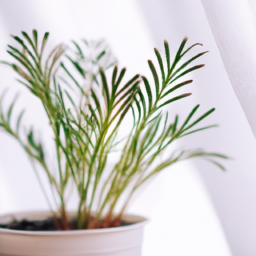
Understanding the Importance of Light Spectrum in Plant Growth
Introduction
When it comes to growing plants indoors, providing the right amount and quality of light is crucial for their overall health and growth. While natural sunlight is the best source of light for plants, it may not always be available or sufficient, especially in indoor settings. This is where plant lights come into play, providing the necessary light spectrum for optimal plant growth. In this article, we will delve into the importance of light spectrum in plant growth and how it affects different stages of a plant’s life cycle.
The Basics of Light Spectrum
Light spectrum refers to the range of wavelengths of light that plants can absorb and utilize for photosynthesis. Different wavelengths of light have varying effects on plant growth and development. The visible light spectrum, which ranges from approximately 400 to 700 nanometers (nm), is of particular importance to plants. Within this spectrum, different colors of light, such as red, blue, green, and others, have distinct effects on plant physiology.
Plants primarily absorb red and blue light for photosynthesis, with each color playing a specific role. Red light, with wavelengths around 600 to 700 nm, is essential for promoting flowering and fruiting in plants. It stimulates the production of chlorophyll, which is crucial for photosynthesis. Blue light, with wavelengths around 400 to 500 nm, is important for vegetative growth, influencing leaf development, stem elongation, and overall plant structure.
While red and blue light are the most critical for plant growth, other colors within the spectrum also play a role. Green light, for example, is reflected by chlorophyll and has minimal impact on photosynthesis. However, it can still influence plant morphology and can be used to optimize light conditions in certain situations.
Light Spectrum and Plant Growth Stages
The light spectrum requirements of plants vary depending on their growth stage. Understanding these requirements is crucial for providing the right light conditions to promote healthy growth and maximize yields. Let’s explore the different growth stages and their corresponding light spectrum needs:
1. Germination and Seedling Stage
During the germination and seedling stage, plants require a balanced spectrum of light that promotes root and shoot development. Providing a light source with a higher proportion of blue light helps in promoting strong and compact seedlings. Blue light stimulates chlorophyll production, leading to efficient photosynthesis and healthy growth. Supplementing with a small amount of red light can also enhance root development.
It is important to maintain an appropriate light intensity during this stage. Too much light can cause heat stress and damage delicate seedlings. On the other hand, insufficient light can result in weak and leggy plants.
Some plant light systems offer adjustable light spectrums, allowing you to tailor the lighting conditions based on the specific needs of your plants at different growth stages.
2. Vegetative Growth Stage
The vegetative growth stage is characterized by rapid leaf and stem development. During this stage, plants require a higher proportion of blue light to support strong and healthy foliage. Blue light helps in regulating plant height, promoting compact growth, and preventing excessive stretching or elongation of stems.
However, it is also important to include some red light during the vegetative stage to ensure balanced growth. Red light stimulates the production of essential plant hormones, such as auxins, which are responsible for cell elongation and overall plant development.
Providing a light spectrum that includes both blue and red light in the right proportions will help plants thrive during the vegetative growth stage.
3. Flowering and Fruiting Stage
The flowering and fruiting stage is a critical phase in a plant’s life cycle, as it determines the production of flowers, fruits, and seeds. During this stage, plants require a higher proportion of red light to stimulate flowering and fruiting. Red light triggers the transition from vegetative growth to reproductive growth, signaling the plant to allocate energy towards flower and fruit production.
Supplementing with blue light during the flowering and fruiting stage can help enhance the quality and quantity of flowers and fruits. Blue light promotes the production of secondary metabolites, such as essential oils and pigments, which contribute to the flavor, aroma, and color of fruits and flowers.
It is important to adjust the light spectrum during this stage to optimize plant productivity and achieve desirable yields.
Conclusion
Understanding the importance of light spectrum in plant growth is crucial for successful indoor gardening. By providing the right balance of red and blue light throughout the different stages of a plant’s life cycle, you can promote healthy growth, maximize yields, and enhance the overall quality of your plants. Whether you are growing herbs, vegetables, or ornamental plants, optimizing the light spectrum will help you achieve the best results. So, invest in a reliable plant light system that allows you to adjust the light spectrum according to your plants’ needs and watch them thrive in the perfect light conditions.

DIY Plant Light Setup: A Step-by-Step Guide for Beginners
Introduction
Growing plants indoors can be a rewarding and enjoyable experience, but it often requires providing adequate lighting for their growth. Plant lights, also known as grow lights, are artificial light sources designed to mimic the natural sunlight necessary for plants to thrive. In this step-by-step guide, we will walk you through the process of setting up your own DIY plant light system, perfect for beginners who want to start cultivating plants indoors.
Understanding Plant Light Requirements
Before diving into the setup process, it’s crucial to understand the light requirements of your plants. Different plants have varying needs for light intensity, duration, and spectrum. Some plants thrive under direct sunlight, while others prefer shade or partial shade. Research the specific lighting needs of your plants to ensure they receive the right amount and quality of light.
Light intensity is measured in foot-candles or lux, and it determines how bright the light is at a specific distance from the source. Duration refers to the number of hours of light exposure needed per day. Lastly, the light spectrum, including different wavelengths like red and blue, affects various plant growth stages.
By understanding these requirements, you can choose the appropriate plant lights and create an ideal environment for your indoor plants.
Choosing the Right Plant Lights
With numerous options available in the market, selecting the right plant lights can be overwhelming. Here are some popular types of plant lights:
1. Fluorescent Lights
Fluorescent lights are a cost-effective choice for beginners. They come in two main types: compact fluorescent lights (CFLs) and high-output fluorescent lights (HOFLs). CFLs are energy-efficient and emit a wider spectrum of light suitable for most plants. HOFLs, on the other hand, provide higher light intensity and are ideal for larger indoor gardens.
When choosing fluorescent lights, look for those labeled as “full spectrum” or “grow lights” to ensure they emit the necessary light wavelengths for plant growth.
2. LED Lights
LED lights have gained popularity due to their energy efficiency and versatility. They are available in a wide range of colors, allowing you to customize the light spectrum for different plant growth stages. LED lights also produce less heat, reducing the risk of burning your plants.
While LED lights may have a higher upfront cost, they have a longer lifespan and consume less electricity, making them a cost-effective option in the long run.
3. High-Intensity Discharge (HID) Lights
HID lights, such as metal halide (MH) and high-pressure sodium (HPS) lights, are commonly used for larger indoor gardens or commercial setups. MH lights emit a bluish light spectrum suitable for vegetative growth, while HPS lights produce a reddish spectrum ideal for flowering and fruiting stages.
However, HID lights can be expensive and generate significant heat, requiring proper ventilation and cooling systems to maintain the optimal temperature for plant growth.
Setting Up Your DIY Plant Light System
Now that you have chosen the right plant lights for your indoor garden, it’s time to set up your DIY plant light system. Follow these step-by-step instructions:
1. Determine the Lighting Area
Start by measuring the area you want to cover with plant lights. Consider the number of plants and their spacing requirements. This will help you determine the number and type of lights needed.
Ensure there is enough space between the plants and the lights to prevent heat damage. As a general guideline, keep the lights at least 12 inches above the plants.
2. Install Hanging Fixtures or Racks
Depending on the type of lights you have chosen, install hanging fixtures or racks to hold the lights. Ensure they are securely mounted to provide stability and prevent accidents.
For fluorescent lights, you can use adjustable hanging chains or hooks to easily adjust the height as your plants grow.
3. Position the Plant Lights
Hang or position the lights above your plants, ensuring they cover the entire lighting area evenly. Adjust the height and angle of the lights to achieve optimal coverage and light distribution.
For larger gardens, consider using multiple lights or light panels to ensure uniform lighting across all plants.
4. Set Up a Timer
Plants require a specific duration of light exposure per day. To automate this process and provide consistent lighting, set up a timer for your plant lights. Timers allow you to customize the duration and automatically turn the lights on and off at the desired times.
Most plants require around 12-16 hours of light per day during the vegetative stage and 8-12 hours during the flowering stage. Adjust the timer accordingly to meet your plants’ needs.
5. Monitor and Adjust
Regularly monitor your plants’ response to the light setup. Observe their growth, leaf color, and overall health. If you notice any signs of light deficiency or excess, adjust the light intensity, duration, or spectrum accordingly.
Remember to maintain proper distance between the lights and plants to prevent burning or light stress. Additionally, keep an eye on the temperature and humidity levels in your indoor garden, as plant lights can contribute to increased heat.
Conclusion
Setting up your own DIY plant light system can be a rewarding experience that allows you to cultivate healthy and thriving indoor plants. By understanding the light requirements of your plants and choosing the right plant lights, you can create an optimal environment for their growth. Follow the step-by-step guide provided in this article to ensure a successful DIY plant light setup. Happy gardening!
Let’s wrap up what we learned
Plant lights, also known as grow lights, are artificial light sources designed to provide the necessary light spectrum for plants to grow and thrive indoors. In this blog post, we will explore the benefits of using plant lights and how they can help you create a successful indoor garden.
One of the primary advantages of plant lights is their ability to mimic the natural sunlight that plants need to carry out photosynthesis. By providing the right combination of red, blue, and sometimes white light, these lights ensure that plants receive the necessary wavelengths for growth and development. This is particularly useful for those who don’t have access to adequate natural light or live in regions with limited sunlight.
Another benefit of using plant lights is the flexibility they offer in terms of location. Unlike traditional gardening, which requires plants to be placed near a window or in a specific area with sufficient sunlight, plant lights allow you to grow plants anywhere in your home. This means you can set up an indoor garden in a basement, attic, or any other space that lacks natural light, expanding your gardening possibilities.
In conclusion, plant lights provide a convenient and effective solution for growing plants indoors. By replicating the natural light spectrum, these lights enable plants to thrive even in spaces with limited sunlight. Whether you’re a gardening enthusiast or simply looking to add some greenery to your home, investing in plant lights can help you create a vibrant and successful indoor garden.
Q1: What are plant lights?
A1: Plant lights, also known as grow lights or horticultural lights, are artificial light sources designed to provide the necessary spectrum and intensity of light for indoor plants to grow and thrive.
Q2: Why do indoor plants need plant lights?
A2: Indoor plants require sufficient light for photosynthesis, the process by which they convert light energy into chemical energy to fuel their growth. Plant lights are necessary in spaces with limited natural light or during the winter months when daylight is limited.
Q3: What types of plant lights are available?
A3: There are various types of plant lights available, including fluorescent lights, LED lights, and high-intensity discharge (HID) lights. Each type has its own advantages and is suitable for different stages of plant growth.
Q4: Which type of plant light is the best?
A4: The best type of plant light depends on your specific needs and the plants you are growing. LED lights are popular due to their energy efficiency, long lifespan, and ability to provide a full spectrum of light. However, fluorescent lights are more affordable and can be suitable for certain plants.
Q5: How far should plant lights be from plants?
A5: The distance between plant lights and plants depends on the type of light and the specific plant’s light requirements. As a general guideline, LED lights can be placed 12-24 inches away, fluorescent lights 6-12 inches away, and HID lights 24-36 inches away from the plants.
Q6: How long should plant lights be kept on?
A6: The duration of light exposure depends on the plants’ natural light requirements and their growth stage. Most plants need 12-16 hours of light per day during the vegetative stage and 8-12 hours during the flowering or fruiting stage.
Q7: Can plant lights replace natural sunlight?
A7: While plant lights can provide the necessary light spectrum for plant growth, they cannot fully replace natural sunlight. Natural sunlight contains a broader spectrum of light and additional benefits that artificial lights may not provide. However, plant lights can supplement or mimic sunlight to support indoor plant growth.
Q8: Do plant lights consume a lot of electricity?
A8: The electricity consumption of plant lights depends on the type and wattage of the lights. LED lights are generally more energy-efficient compared to fluorescent or HID lights. Investing in energy-efficient plant lights can help reduce electricity consumption and save on energy costs.
Q9: Can I use regular household lights as plant lights?
A9: Regular household lights, such as incandescent bulbs, are not suitable as plant lights. They do not provide the necessary light spectrum for plant growth and can generate excessive heat, potentially damaging the plants. It is recommended to use specialized plant lights designed for horticultural purposes.
Q10: Are plant lights safe to use?
A10: Yes, plant lights are safe to use when used properly. However, it is important to follow the manufacturer’s instructions, especially regarding the distance between the lights and plants to prevent overheating or burning. Additionally, ensure that the electrical setup and wiring comply with safety standards to avoid any hazards.
Dr. Olivia Green is a botanist with over two decades of experience in indoor plant cultivation. She holds a Ph.D. in Plant Biology and has dedicated her career to researching plant behavior in controlled environments. Dr. Green is passionate about helping plant enthusiasts master the art of indoor gardening through her extensive knowledge and practical insights.

